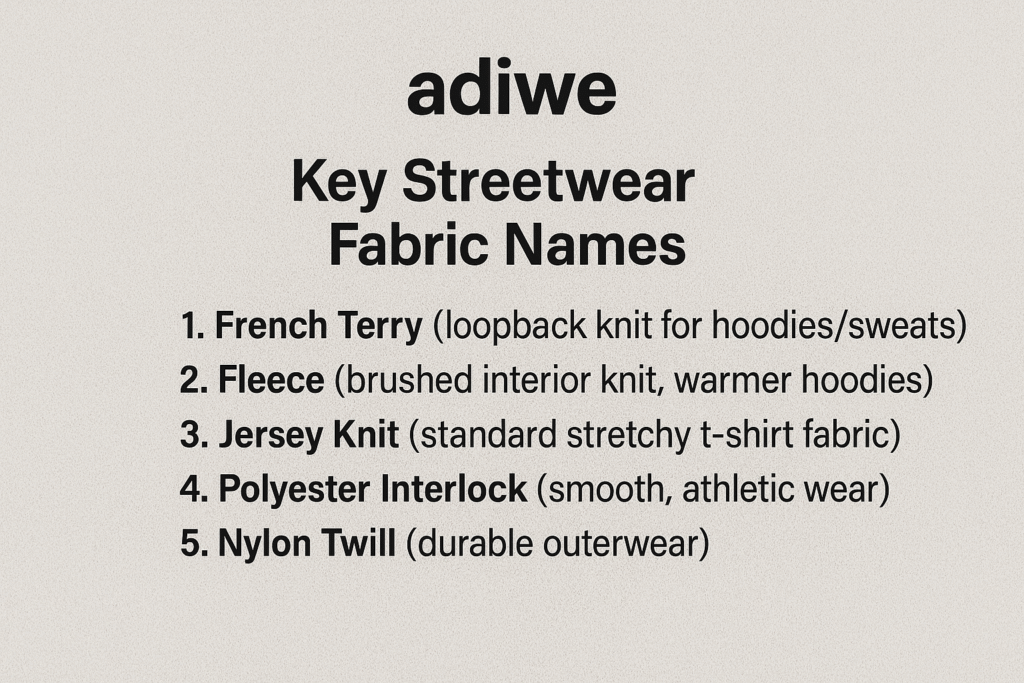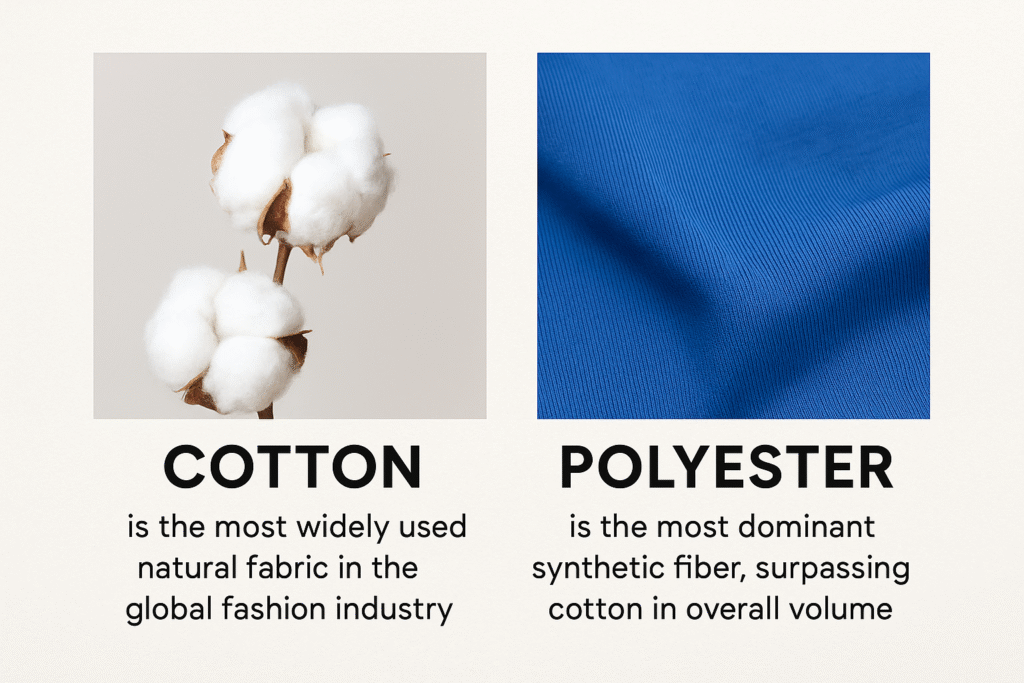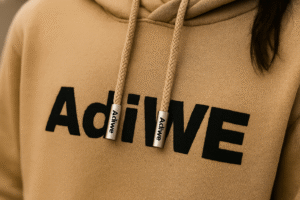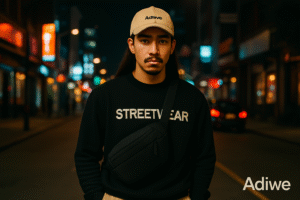Choosing the wrong fabric ruins your design and wastes money. You want materials that feel right, look sharp, and truly represent your streetwear brand's quality and style.
The top fabric choices for streetwear often include Cotton (especially French Terry and Fleece), Cotton/Polyester Blends, Jersey Knit, Polyester variations (like Interlock), and sometimes Nylon. These offer the needed comfort, durability, and style.
Selecting the right fabric is fundamental. It affects the garment's feel, look, durability, printability, and overall cost. As a manufacturer specializing in custom streetwear like hoodies and t-shirts for brands in North America and Europe, we at Adiwe see firsthand how critical fabric choice is. Let's explore the common fabrics used and why they matter for your brand.
What Fabric is Used Most Often in Streetwear?
Worried your garments won't have that authentic streetwear feel? Using generic fabrics can make your brand look cheap or out of touch with the culture.
Cotton, particularly heavyweight French Terry and Fleece, is the most commonly used fabric foundation in streetwear for items like hoodies and sweatshirts. Cotton jersey dominates for t-shirts, while polyester blends are also frequent.
!
Diving Deeper into Streetwear Fabric Staples
Why do certain fabrics dominate the streetwear scene? It boils down to a mix of comfort, durability, style, and cultural association. Here's a closer look:
Why Cotton Dominates (Especially Heavyweight)
Cotton feels good against the skin. It's breathable, natural, and takes dyes and prints exceptionally well, which is vital for graphic-heavy streetwear. Heavyweight cotton, often used for hoodies and sweats (like the ones clients such as Fifty Fifty prefer for their brand), provides structure, a premium feel, and holds its shape. Think about classic, durable hoodies – they're almost always made from substantial cotton fleece or French terry. It's the standard for perceived quality and comfort in this market.
The Rise of Blends (Cotton/Polyester)
While 100% cotton is often preferred for feel, cotton/polyester blends are very common for practical reasons. Adding polyester increases durability, reduces shrinkage, can lower costs, and sometimes adds performance features like faster drying. A typical 80/20 or 60/40 cotton/poly blend is a workhorse for many streetwear brands, balancing comfort and performance. We often help clients decide the right blend ratio based on their desired feel, price point, and garment function.
Performance Fabrics' Role
Pure synthetics like 100% polyester or nylon also have their place. Polyester interlock or mesh is used for more athletic-inspired streetwear – track jackets, jerseys, or shorts. Nylon, often with a crinkle or twill finish, is popular for outerwear like coach jackets, windbreakers, and track pants due to its durability and water resistance.
| Feature | 100% Cotton (Heavyweight) | Cotton/Poly Blend | 100% Polyester/Nylon |
|---|---|---|---|
| Comfort | High (Soft, Breathable) | Good | Moderate (Less Breathable) |
| Durability | Good | Very Good | Excellent |
| Printability | Excellent | Good | Good (Requires specific inks) |
| Cost | Higher | Moderate | Lower to Moderate |
| Common Use | Premium Hoodies, Tees | Everyday Hoodies, Tees | Tracksuits, Outerwear |
Understanding these core materials is the first step to making informed choices for your collection.
What Are 5 Key Fabric Names Every Streetwear Brand Should Know?
Confused by fabric terms like "French Terry" or "Interlock"? Not knowing these specifics makes it hard to communicate your vision accurately to manufacturers like us at Adiwe.
Key streetwear fabric names include: 1. French Terry (loopback knit for hoodies/sweats), 2. Fleece (brushed interior knit, warmer hoodies), 3. Jersey Knit (standard stretchy t-shirt fabric), 4. Polyester Interlock (smooth, athletic wear), 5. Nylon Twill (durable outerwear).

Diving Deeper into Specific Streetwear Fabrics
Knowing the right terminology is crucial when discussing custom designs. When a client like Fifty Fifty specifies they need a hoodie with a certain weight and interior feel, knowing these terms helps us match their requirements precisely. Let's break down those five key fabrics:
1. French Terry
This is a knit fabric with loops on one side (the inside) and a smooth surface on the other (the outside). It's absorbent, comfortable, and mid-weight.
- Characteristics: Loopback interior, smooth face, moderate warmth, good drape.
- Common Uses: Hoodies, sweatshirts, joggers, shorts. It's a year-round staple for many streetwear brands. We produce countless French terry hoodies for our North American and European clients.
2. Fleece
Similar to French Terry, Fleece is a knit fabric, but the loop side has been brushed heavily to create a soft, fuzzy, dense surface. This traps air, making it warmer.
- Characteristics: Very soft brushed interior, smooth face, traps heat well, often heavier than French Terry.
- Common Uses: Primarily winter-weight hoodies, sweatshirts, and sweatpants. Essential for colder climates.
3. Jersey Knit
This is the classic t-shirt fabric. It's a lightweight knit, usually cotton or a blend, with a smooth face and a slightly more textured back. It has natural stretch.
- Characteristics: Lightweight, stretchy, breathable, comfortable against the skin. Comes in various weights (measured in GSM - grams per square meter).
- Common Uses: T-shirts (the vast majority), tank tops, lightweight long-sleeves. Customizing the GSM is key for achieving the desired quality feel.
4. Polyester Interlock
Interlock is a variation of rib knit. Both sides of the fabric look the same (smooth), and it has more natural stretch and better recovery than jersey. It's often made from polyester for athletic apparel.
- Characteristics: Smooth on both sides, stable knit, good stretch and recovery, often has a slight sheen.
- Common Uses: Track jackets, track pants, athletic jerseys, performance tees.
5. Nylon Twill
Nylon is a synthetic fiber known for strength and abrasion resistance. Twill is a type of weave creating a diagonal pattern (like denim). Nylon twill is durable and often water-resistant.
- Characteristics: Strong, durable, abrasion-resistant, often wind/water-resistant, smooth texture with diagonal lines.
- Common Uses: Outerwear (coach jackets, bombers, windbreakers), pants, bags, accessories.
| Fabric Name | Key Characteristics | Common Streetwear Uses |
|---|---|---|
| French Terry | Loopback knit, mid-weight, comfortable | Hoodies, Sweatshirts, Joggers |
| Fleece | Brushed interior, warm, soft, heavier | Winter Hoodies, Sweatpants |
| Jersey Knit | Lightweight knit, stretchy, breathable | T-Shirts, Tank Tops |
| Polyester Interlock | Smooth both sides, stable, athletic feel | Tracksuits, Jerseys |
| Nylon Twill | Durable weave, strong, often water-resist | Jackets, Pants, Bags |
Knowing these helps you specify exactly what you need for your custom designs.
What is the Most Used Fabric in Fashion Overall?
Wondering if streetwear fabric trends align with the broader fashion industry? Knowing the most common global fabric helps understand the baseline market context.
Cotton is the most widely used natural fabric in the global fashion industry. Polyester is the most dominant synthetic fiber, surpassing cotton in overall volume due to its versatility and low cost.

Diving Deeper into Fashion's Dominant Fabrics
While streetwear has its specific preferences, it operates within the larger fashion ecosystem. Understanding the giants – Cotton and Polyester – provides context:
Cotton's Universal Appeal
Cotton is king in natural fibers for many reasons. It's comfortable, breathable, hypoallergenic, relatively easy to dye and finish, and incredibly versatile. It can be made into everything from delicate voile and basic jersey (like t-shirts) to heavy canvas and denim. Its widespread use stems from these adaptable properties and consumer preference for its natural feel. Almost every wardrobe contains multiple cotton items.
Polyester's Dominance
Polyester, a synthetic polymer, has overtaken cotton in sheer volume globally. Why?
- Cost: It's generally cheaper to produce than cotton.
- Durability: It's strong, resistant to stretching, shrinking, and abrasion.
- Ease of Care: It's wrinkle-resistant and dries quickly.
- Versatility: It can be engineered to mimic other fibers (like silk) or blended with natural fibers (like cotton) to add strength and reduce cost. It's fundamental in fast fashion, activewear, and countless other categories.
Why This Matters for Streetwear
Streetwear effectively utilizes both dominant fibers.
- Cotton: Remains the backbone for core items where comfort, authenticity, and premium feel are paramount (tees, hoodies, sweats). Brands often emphasize high-quality or organic cotton.
- Polyester: Used strategically. In blends (poly-cotton), it enhances durability and manages cost, crucial for B2B wholesale like we do at Adiwe. In 100% form, it's key for specific aesthetics (shiny tracksuits) or performance features needed in athletic-inspired streetwear or outerwear. Clients must weigh the pros and cons based on their brand positioning and target customer. For instance, a brand focused purely on premium, natural feel might stick to 100% cotton, while another needing more accessible price points might use blends.
| Feature | Cotton | Polyester |
|---|---|---|
| Source | Natural (Plant Fiber) | Synthetic (Petroleum-based) |
| Pros | Breathable, Soft, Biodegradable | Durable, Cheap, Wrinkle-Resistant, Quick-Dry |
| Cons | Less Durable, Wrinkles, Slower Drying | Less Breathable, Environmental Concerns |
| Fashion Use | Tees, Jeans, Shirts, Underwear, Towels | Activewear, Outerwear, Fast Fashion, Blends |
Understanding the roles of these two giants helps contextualize your specific fabric choices for your streetwear brand.
Conclusion
Choosing the right fabric is vital for your streetwear brand's success. Cotton forms the core, especially French Terry and Fleece, while blends and synthetics like polyester offer performance and cost options.




